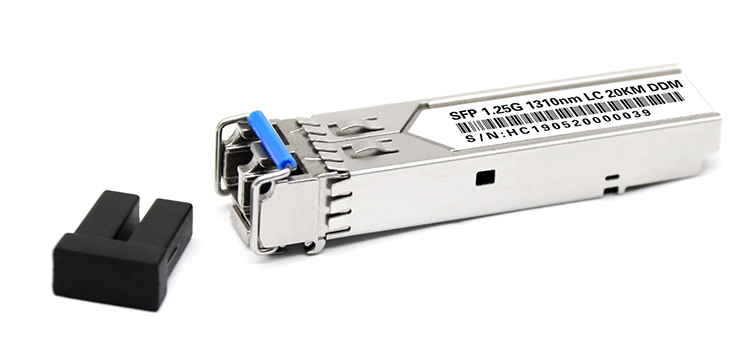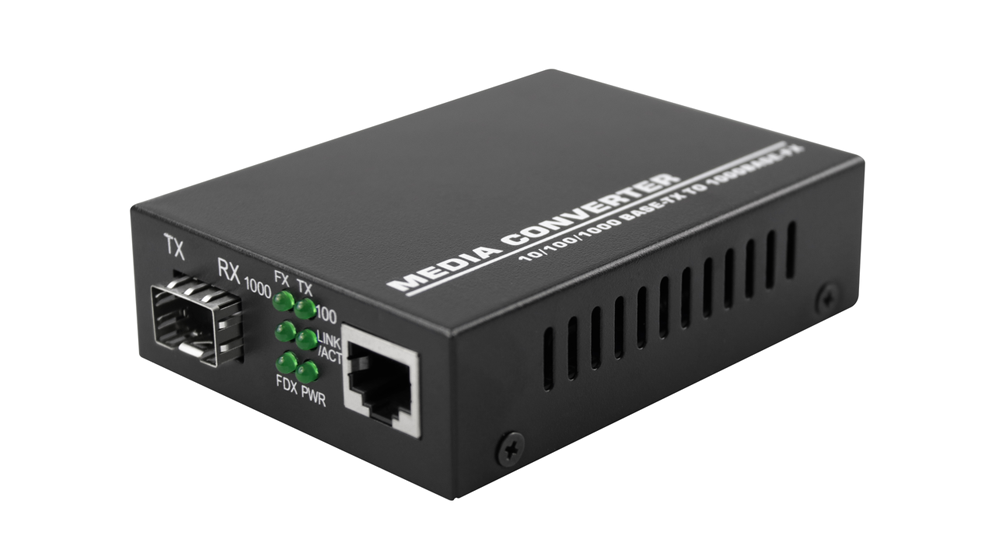Optical modules and optical fiber transceivers are devices that perform photoelectric conversion. What is the difference between them? Nowadays, long-distance data transmission used in many smart projects basically uses optical fiber transmission. The connection between this requires optical modules and fiber optic transceivers. So, how should these two be connected, and what should be paid attention to?
1. Optical module
The function of the optical module is also the conversion between the photoelectric signals. It is mainly used for the carrier between the switch and the device. It has the same principle as the optical fiber transceiver, but the optical module is more efficient and safe than the transceiver. The optical modules are classified according to the package form. Common ones include SFP, SFP +, XFP, SFP28, QSFP +, QSFP28, etc.
2. Optical fiber transceiver
Optical fiber transceiver is a device that converts short-distance electrical signals and long-distance optical signals. It is generally used in long-distance transmission, transmitting through optical fibers, converting electrical signals into optical signals and sending them. The received optical signal is converted into an electrical signal. It is also called Fiber Converter in many places.
Fiber optic transceivers provide an inexpensive solution for users who need to upgrade the system from copper wire to fiber optics, but lack capital, manpower or time.
3. The difference between optical module and optical fiber transceiver
① Active and passive: The optical module is a functional module, or an accessory, is a passive device that cannot be used alone, and is only used in switches and devices with optical module slots; optical fiber transceivers are functional devices. It is a separate active device, which can be used alone when plugged in;
②Upgrading configuration: The optical module supports hot swapping, the configuration is relatively flexible; the optical fiber transceiver is relatively fixed, and replacement and upgrade will be more troublesome;
③Price: Optical fiber transceivers are cheaper than optical modules and are relatively economical and applicable, but also need to consider many factors such as power adapter, light status, network cable status, etc., and the transmission loss accounts for about 30%;
④Application: Optical modules are mainly used in optical network communication equipment, such as optical interfaces of aggregation switches, core routers, DSLAM, OLT and other equipment, such as: computer video, data communication, wireless voice communication and other optical fiber network backbone; optical fiber transceiver It is used in the actual network environment where the Ethernet cable cannot cover and must use optical fiber to extend the transmission distance, and is usually set as the access layer application of the broadband metropolitan area network;
4. What should be paid attention to when connecting the optical module and the optical fiber transceiver?
① The speed of the optical module and the optical fiber transceiver must be the same, 100 megabytes to 100 megabytes, gigabit to gigabit, and 10 megabytes to 10 trillion.
② The wavelength and transmission distance must be consistent, for example, the wavelength is 1310nm or 850nm at the same time, and the transmission distance is 10km;
③ The type of light must be the same, single fiber to single fiber, dual fiber to dual fiber.
④ Fiber jumpers or pigtails must be connected through the same interface. Generally, fiber optic transceivers use SC ports and optical modules use LC ports.







